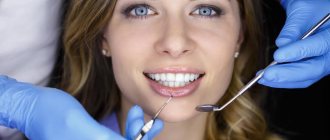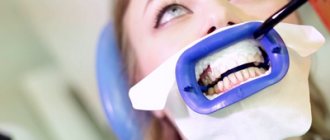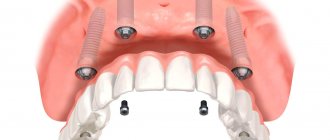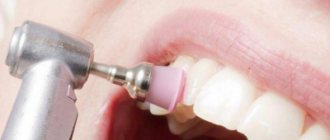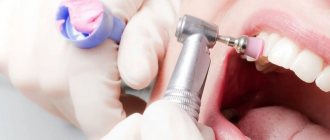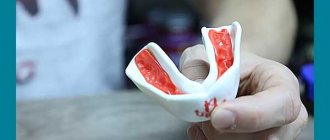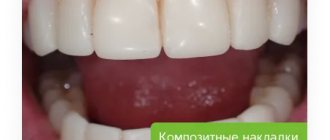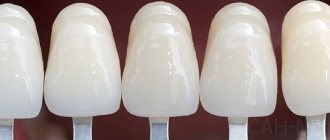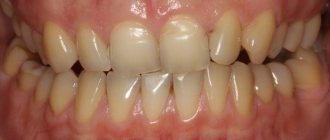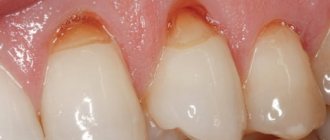November 19, 2010
Tooth enamel is the hardest tissue in the human body. What can harm tooth enamel, and how to keep it healthy?
Tooth enamel is the hardest tissue in the human body. It is thanks to her that a person can eat, chew on dried bread, wash it down with hot tea and at the same time smile dazzlingly. What can harm tooth enamel and how to keep it healthy, says Edith Kuzmina, head of the Department of Prevention of Dental Diseases at Moscow State Medical University.
What determines the color of teeth
It is believed that the color of the enamel determines the color of a person’s teeth, but in fact this is not entirely true. Tooth enamel can be milky white and translucent. Initially, in young people, it is quite dense and almost does not show through the underlying dentin, which in turn has a yellow, grayish or yellow-brown tint. The thicker the enamel, the whiter the teeth. The converse is also true.
Over the course of a person's life, the enamel becomes thinner and the color of the dentin appears. Hence the yellow or grayish smiles of older people. Food, drinks and tobacco also contribute to the darkening of teeth. Don’t forget about dental plaque and tartar, which absorb pigments much more strongly than enamel due to their porous structure.
A sudden change in the color of one or more teeth may indicate the presence of a disease. Thus, with fluorosis, teeth may acquire a brownish tint with whitish spots or stripes. Gray color occurs in pulpless teeth or may indicate heavy metal poisoning.
Why is enamel destroyed?
Rules for caring for first teeth
Why should you brush your baby teeth, and how to do it correctly? Answers that will help save your children's teeth.
Almost all of the enamel consists of solid mineral components - calcium and phosphates - and only 5 percent of organic matter and water.
Minerals can penetrate the surface layers of enamel from saliva, a process called remineralization
.
But under the influence of acids secreted by plaque bacteria, calcium is able to be released back from the enamel into saliva - this is demineralization
of the enamel. Normally, the processes of demineralization and remineralization are in balance. But if teeth are brushed too rarely, or a person constantly abuses foods that contain sugar, bacteria actively multiply in the oral cavity. And they produce too much acid, which destroys the enamel.
How to keep your teeth white
To keep your teeth white, you need to:
- Perform good oral hygiene, including brushing, flossing, and using mouth rinse
- Using a waterpik at least twice a week to get rid of plaque
- Once or twice a year, have your mouth professionally cleaned by a dental hygienist to remove tartar.
- Limit or eliminate smoking, strong tea and coffee
It is also important to make regular visits to the dentist for diagnostic procedures. This will allow timely identification of problems and identification of deterioration of the enamel.
How does smoking affect enamel and teeth?
Tars that enter the oral cavity with tobacco smoke form pigmented plaque, the color of which varies from brown to black. This plaque is firmly fixed on the surface of the teeth and can only be removed with professional cleaning. In addition, smokers develop tartar more intensively, including under the gums. And when you regularly smoke a large number of cigarettes, the components of tobacco smoke accumulate in the enamel, causing darkening of the teeth. By the way, smoking is considered as one of the indicators of tooth loss
. Only 20 percent of non-smokers over 65 years of age suffer from complete absence of teeth, while the figure for smokers is 41.3 percent.
Teeth whitening and restoration techniques
If even careful care and regular professional hygiene do not allow you to completely get rid of yellowness, teeth whitening comes to the rescue. In our articles, we have already examined in detail the advantages and disadvantages of office and home whitening.
When darkening of the teeth is caused by severe thinning of the enamel, dental disease, or a general deterioration in the patient’s health, the first step is to correctly diagnose the problem and carry out appropriate treatment. Afterwards, it is possible to restore your smile with the help of veneers, lumineers and crowns.
We recommend that you try your best to keep your teeth healthy.
How do coffee, soda and candy affect enamel?
Frequent consumption of coffee gives the enamel a yellow tint. “However, this effect is also observed to varying degrees when consuming other foods and drinks that have coloring properties,” notes Kuzmina, “strong tea, chocolate, blueberries, red wine.” Over time, the enamel's sensitivity to food coloring increases; at the same time, the enamel becomes thinner
and loses its transparency, which worsens tooth discoloration. Some experts believe that caffeine has an antibacterial effect and kills streptococci, which are most often responsible for the development of tooth decay. True, the positive effect of coffee is noticeable if you drink no more than two cups a day and brush your teeth regularly. But carbonated and energy drinks, as well as sweets, cause undoubted harm to teeth. These foods contain large amounts of sugar, which plaque bacteria use as a food source. The acids released during the life process cause demineralization of the enamel. In addition, carbonated drinks themselves contain acid, which has a direct aggressive effect on the enamel, dissolving it.
Meet the “white diet”
Recommendations for maintaining the results of teeth whitening are based on following a special diet during the first two weeks. It is called colorless, or white, and this is a very correct name, because after the bleaching procedure you should not eat foods containing natural dyes.
The choice of products without dyes is quite wide, so the “white diet” will not require complete self-denial from you. Among the permitted products:
- potatoes and rice;
- white sea fish and chicken;
- White mushrooms;
- white (wheat) bread;
- walnuts and tofu cheese;
- all “milk” (milk, kefir, cottage cheese, etc.);
- pears and green apples.
conclusions
Young wines stain teeth enamel more strongly than aged wines. Of the eight samples, according to the results shown by the spectrophotomaterial, the Sangiovese variety turned out to be the strongest.
Varieties according to the strength of influence on the color of the enamel:
- Sangiovese
- Saperavi
- tempranillo
- malbec
- cabernet sauvignon
- Syrah
- merlot
- pinot noir
It is important that after whitening, teeth became more permeable to red wine. That is, if you have whitened your teeth, it is advisable to refrain from drinking red wines for one or two weeks. To maintain the brightness of teeth, dentists recommend using special hygiene accessories - enamel cleaning wipes and specialized toothpastes with a whitening effect.
© Kelsey Knight/Unsplash
Wines and teeth
Young wines with a close harvest interval of 2016–2018 were taken for the study. All wines were varietal. Four are native to Europe and four are from South America. For the purity of the experiment, the teeth of one person were needed so that they did not have fillings and were not subject to bleaching. Such teeth were found, and their removed form was provided for research. After removal, they were stored in saline. Next, for the experiment, the teeth were sawed along the longitudinal axis and eight similar parts were obtained for eight wines. The teeth belonged to a 27-year-old patient and were free of caries.
What will you have to give up?
Sacrifices, however, will be required, because the coloring products that you need to avoid completely for a period of several days to several weeks include your absolute favorites:
- coffee, tea, cocoa
- juices, fruit drinks, carbonated drinks with dyes
- berries, fruits, “colored” vegetables
- sauces, ketchups, hot seasonings (mustard, adjika)
- chocolate and red wine
If you accidentally eat anything on this list, brush your teeth as soon as possible or use a mouthwash designed to remove pigmentation from tooth enamel!
Already two days after the whitening procedure, you can begin introducing prohibited foods into your diet. First - tea/coffee (with milk, no more than one glass per day, it is better to drink through a straw - to minimize the coloring effect on the enamel), the rest of the list - only after 2-3 weeks and gradually. It is also advisable to temporarily give up acidic foods - this will ensure a gentle regime that takes into account the always increased sensitivity of the enamel after bleaching.
The essence
Red wine contains tannic acid, which interacts with the protein in saliva, which leads to discoloration of teeth. The color of wine is formed by anthocyanins and tannins, which are contained in the skin of grapes. Each variety has a different quantity, and it is also influenced by production methods, for example, aging in an oak barrel. All these chemical elements lead to tooth pigmentation and the appearance of plaque.
It is important that after whitening, teeth became more permeable to red wine. That is, if you have whitened your teeth, it is advisable to abstain from drinking red wines for one or two weeks
What diet should you follow after whitening?
Before you whiten your teeth, you need to decide to change your diet for the next few weeks. In order for the resulting effect to be consolidated and preserved for a long time, they adhere to a white or transparent diet.
All foods that contain coloring pigments or that can cause darkening of the enamel are excluded from the diet:
- coffee, tea, red wine, juices, hot chocolate, cocoa, sweet sodas;
- beets, pumpkin, carrots, tomatoes, red cabbage;
- blueberries, blackberries, black currants, mulberries, blueberries, grapes, cranberries, pomegranates, raspberries, strawberries, cherries;
- black bread, buckwheat;
- spices with yellow pigment (turmeric, curry), paprika, cinnamon, nutmeg;
- confectionery products with artificial colors;
- liver, heart.
In general, the diet will remain rich, since there are many products and dishes included in the white diet. These include all light vegetables, meat, poultry, fish, milk and dairy products, potatoes, cereals, pasta, nuts, and oils. Among berries and fruits, white grapes, melon, pears, and bananas are neutral. Drinks you can drink are light juices, lightly brewed green tea, and mineral water.
The right diet
Many drinks and foods can stain enamel. The most dangerous for snow-white color include:
- Coffee – both instant and brewed;
- Tea, especially black and pu-erh. Green stains the enamel to a lesser extent;
- Red wine;
- Carbonated drinks, colored in various colors;
- Some candies and sweets.
Also, darkening of the enamel is often caused by an incorrect diet, which contains a lot of food with a soft texture and a high content of carbohydrates - sweets, baked goods, desserts, and so on. All of them contribute to the formation of bacterial plaque on the enamel surface.
It is recommended to include more foods with a tough texture in your diet. For example, thoroughly chewing fresh apples after eating cleanses the surface of the teeth from plaque and bacteria. Carrots, pears, celery, broccoli - all this will help keep the enamel white.
“Making beauty” at home
Home whitening methods use individual dental trays for whitening gel, the concentration of which varies between 9-22%. Despite the fact that the home method is relatively slow and is carried out over 2-6 weeks (depending on the severity of the condition and some features of the structure of the tooth enamel, for example, with a disease such as fluorosis), the result is almost always wonderful. There is rarely any change in tooth sensitivity, which is quickly restored after the procedures are completed. Teeth, while lightening, retain the natural coloring of the entire surface and do not change their natural appearance. The desired effect is not always achieved only in teeth with tetracycline pigmentation and other types of color changes in the deep tissues of the teeth.
What to eat after whitening
A colorless diet is based on foods that have a low risk of staining the enamel. Your diet should include more protein foods and foods rich in calcium and fluoride. Here is the full list of permitted products:
- milk and dairy products, yogurt without dyes, cottage cheese and sour cream, light cheeses;
- white meat (turkey, chicken breast, rabbit);
- white fish (cod, hake, pollock, flounder), shrimp, squid, mussels;
- egg white;
- pasta, white bread, oatmeal and rice, white beans;
- champignons, porcini mushrooms;
- potatoes, cabbage, zucchini, cucumbers, white onions, garlic;
- green apples, pears, melon, bananas, grapes;
- clear broths, clean water, uncolored drinks.
During this period, it is recommended to steam, boil, stew or bake in the oven. Dishes made from minced meat, omelettes, salads, cereals, purees, soft baked goods will be useful.
Memo to smokers
A heavy smoker and a Hollywood smile are poorly compatible concepts, so the requirements for this category of patients are especially stringent: in the first two days after the teeth whitening procedure, you must completely give up nicotine, in the next two weeks, smoke a minimum amount of cigarettes (or better yet, switch to an electronic cigarette) .
If these requirements are not met, even after laser whitening, tooth enamel will very soon acquire a yellow tint, nullifying your efforts and costs.
